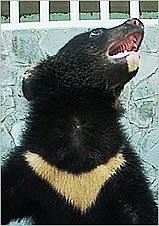Super-Strong Material Inspired By Squid Teeth Is Self-Healing
A team of researchers led by engineers from Penn
State University has created the first material that heals itself in the
presence of water, according to a study published yesterday in Scientific Reports.
The material, inspired by squid teeth, could be used to repair devices
in water-filled environments that are difficult to access, such as the
human body, or the bottom of the sea.
The researchers had been studying squids' ring
teeth, which are uniquely strong and can change phase from liquid to
solid in the presence of water. After testing ring teeth samples from
several species of squid found all over the world, the researchers
uncovered the genetic code for the proteins that allow the teeth to heal
themselves when broken. They then engineered bacteria to produce the
proteins so they could conduct more tests.
The researchers then made the proteins into a
rubbery plastic by mixing them with a solvent and letting the solvent
evaporate. The resulting material combines a soft, amorphous part of the
protein that gives the plastic its self-healing properties and a more
structured sheet of amino acids that give it a solid structure.
To test the material’s strength, the researchers
cut it, then put the two pieces back together with a drop of water.
They found that the material healed best at 113 degrees Fahrenheit, a
little warmer than the temperature of the human body, and with slight
pressure from a metal tool. The material was just as strong, and able to
hold the same amount of weight, before and after it was cut.
Video of self-healing polymer
Material that heals itself in the presence of
water could extend the usability of biomedical implants, or
hard-to-access fiber optic cables on the ocean floor that need repairs.
Of course, this material is nowhere near ready for that application, and
the researchers didn’t test whether the constant presence of water
degrades the plastic’s ability to heal itself. The researchers next plan
to study how their technology could help heal wounds.
Correction (9/3/2015, 10:35 a.m. ET):
The original story stated that the study was led by researchers at the
University of Pennsylvania. It should be Penn State University and has
been corrected. Our bad!




